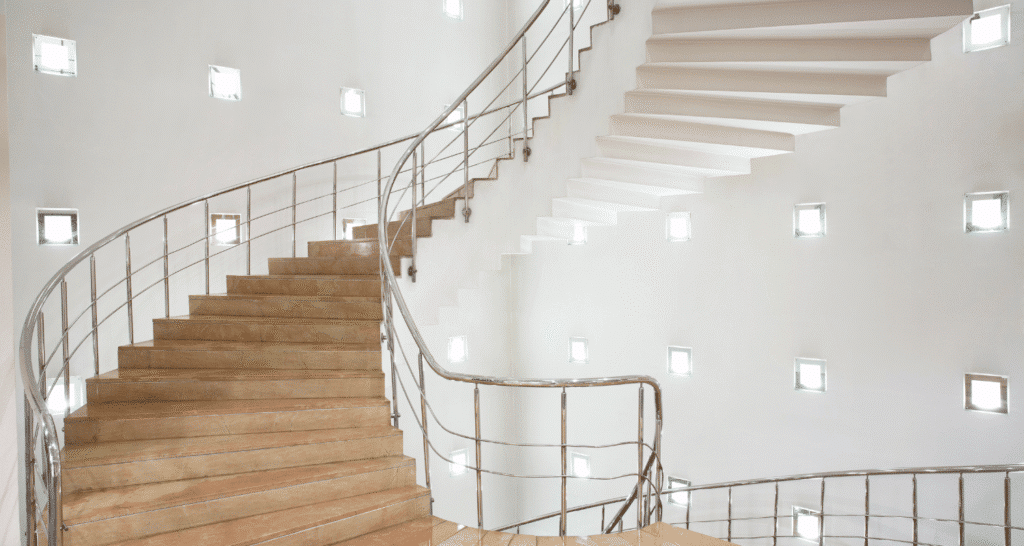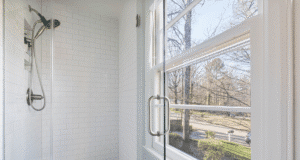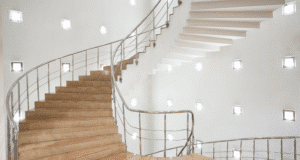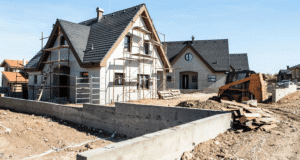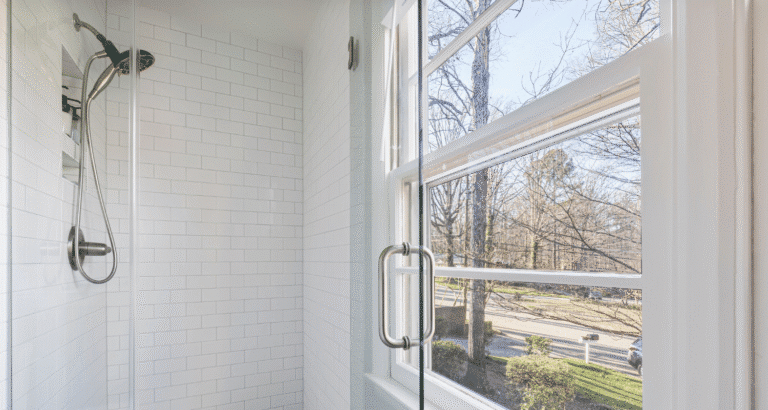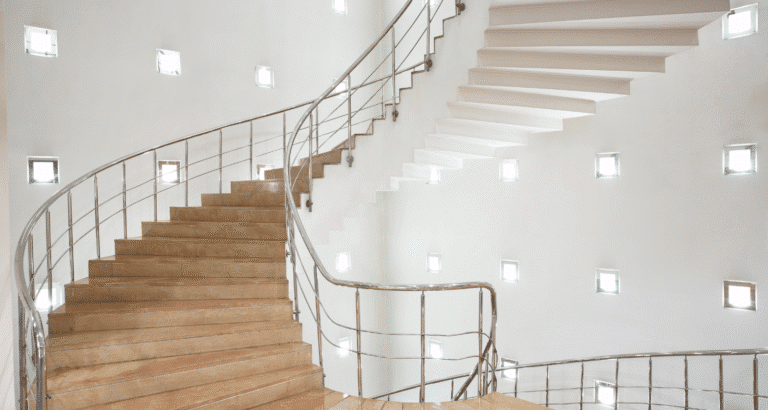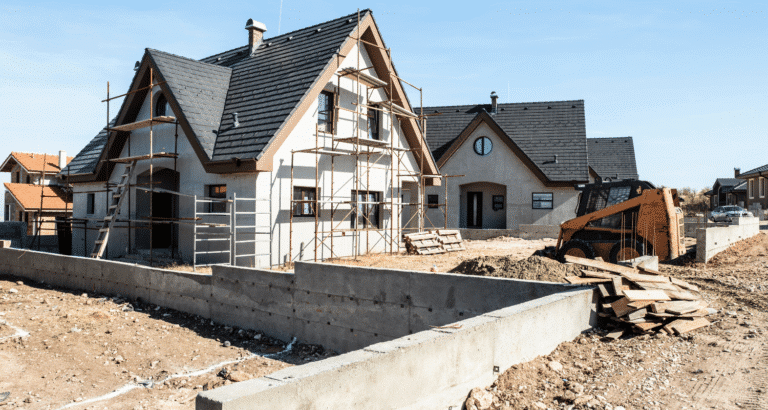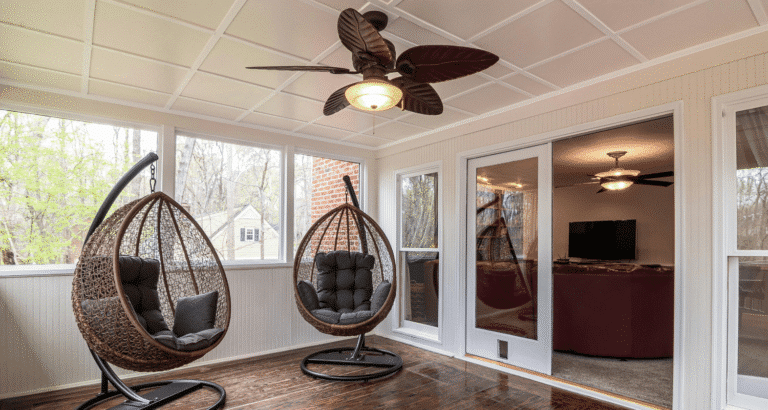When planning a stair remodel, one of the most often overlooked but critical aspects is the detail added by your stair nosing. The debate over square vs round noses for stairs usually arises when homeowners or designers are finalizing finishes. This decision affects not just the look of your stairs but also a key component in stair safety factors involving care, maintenance, and long-lasting durability. The difference between square and round stair noses plays a crucial role in both design and installation.
What is Stair Nosing?
Stair nosing refers to the rounded, bullnose lip of each stair tread, adding aesthetic appeal to staircases, landings, and other wood projects. It adds support, extends product life, and is a safer walking surface. It comes in three types, and each one can be made of the same sorts of materials (wood, metal, vinyl, or laminate). Therefore, it is not uncommon to find them in trims or molding, such as square-nose molding profiles, stair edge strips, or stamped concrete decorative bullnose stair steps.
Stair nosing serves three main purposes:
- Safety: Reducing slips and falls by increasing tread space.
- Durability: Protecting the edge of the stairs from wear and tear.
- Design: Enhancing the visual flow and style of the staircase.
The Key Differences Between Square vs Round Stair Nosing
Style, safety, installation, and maintenance all come into play when comparing square vs. round noses for stairs.
1. Square Nose (Square-Edge or Square-Nose Moulding)
Square nose stair nosing offers a sleek, crisp edge, ideal for achieving an innovative and streamlined appearance in both modern and traditional interiors.
Design & Aesthetics
Square noses offer a clean, sharp appearance. They are great for contemporary decor that emphasizes sharp lines. The sleek design often complements ultra-modern flooring options well.
Safety
Square noses do provide a distinct edge, but in some instances, they create an even greater risk of tripping if not accompanied by stair edge stripping to ensure a nice, rounded corner. That being said, you can get anti-slip trims or inserts to reduce this risk.
Durability
They are sturdy and effectively protect the edges of the stairs. Great with laminated, engineered wood, and solid hardwood.
Installation
Square noses align easily with flooring planks, making installation straightforward; thus, installation is relatively easy for professionals.
Maintenance
Dust tends to accumulate in corners due to the sharp angle, so you’ll need to clean it periodically.
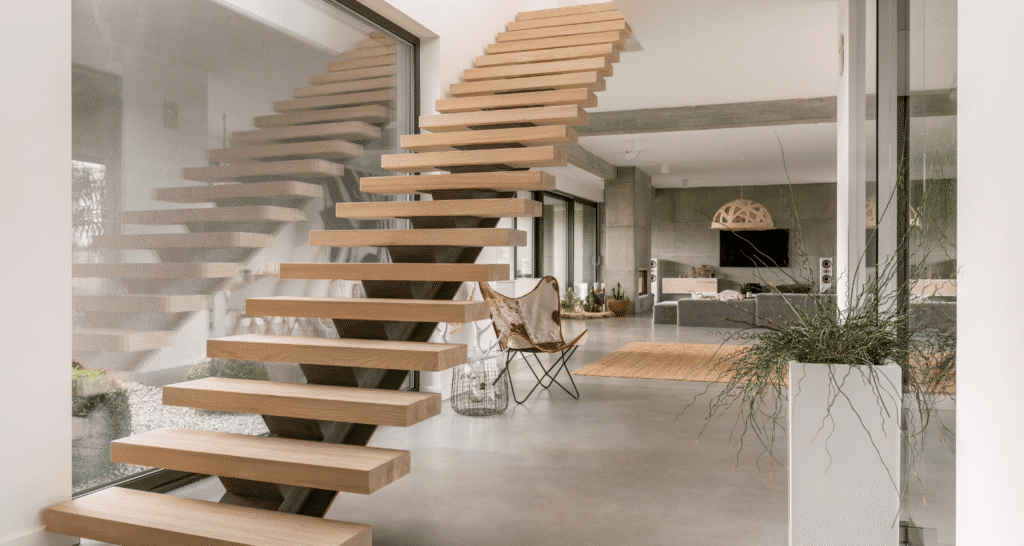
2. Round Nose (Bullnose or Rounded Edge)
A round nose is known as bullnose stair nosing, characterized by a smooth, rounded edge that softens the hard lines of your stairs, offering comfort, safety, and a classic appeal to traditional and transitional styled homes.
Style & Design: Round noses, also called bullnose stair profiles, have a softer, more curved look compared to the sharp edge of square noses or milled treads. They blend seamlessly into classic and transitional interiors.
Safety: The rounded edge on the tread is designed to dissipate impact energy when a person falls or stumbles, making it ideal for families with children and elderly residents.
Strength: Because round corners tend to distribute impact, you may not risk chips or cracks; sharp edges, on the other hand, could sustain damage.
Installation: Installing a round nose requires greater accuracy to keep edges flush with stair treads, particularly during a staircase remodel.
Maintenance: It’s easier to keep the rounded nosing clean because nooks and crannies don’t trap the dust.
Stair Safety Considerations
Options: The choice between square and round stair noses directly impacts stair safety. Square noses can be hazardous if non-slip finishes or stair edge strips are not used with them, yet they can also look stylish. For example, rounded noses can be less discernible underfoot, even when they provide less traction underfoot, especially if they’re paired with smoother flooring material.
For both, adding stair nosing trim or anti-slip inserts can increase safety. If you are replacing the nosing as part of a stair refinishing job, you should focus on safety.
Materials for Stair Nosing
When it comes to square nosing vs. round nosing for stairs, we need to consider the shape and materials, not just their profile, as this will directly impact performance, durability, safety, and overall appearance.
Wood: A timeless choice for indoor stairs. Sold in both a square style and a bullnose moulding. Ideal for stair refinishing projects.
Metal: Sturdy and used in commercial settings for safety frequently. Works excellently with stair edge strips.
Vinyl, PVC: Inexpensive, with good resilience; sometimes used as a quick fix for damaged molding.
Laminate: A match to the flooring model, which is available in square and round styles.
Installation and Maintenance
It’s vital that stair nosings are installed and maintained correctly to ensure long-term safety and durability, whether you choose a square-nose molding or a rounded bullnose profile.
Installation
Stair nosing should be installed professionally. With a professional stair company, you can ensure that the nosing is installed properly, preventing uneven treads that can cause serious falls. Square-nose moulding installs easily with contemporary floors, whereas bullnose stair treads may require precise cutting for seamless results.
Maintenance
Routine cleaning and inspection are essential. Square noses may require extra maintenance in the corners, while round noses generally need less, as they tend to be less prone to this issue. In the long run, nosings can become worn and need to be replaced to ensure consistency in safety and design.
Stair Renovation and Design Choices
If you’re renovating your stairwell or refinishing the stairs that lead up to one of your home’s upper levels, the proper nosing balances function with design. Consider the following:
- Style of your Home: If you have a modern home, you may prefer square noses; bullnose is best suited to classic or traditional interiors.
- Usage: A high-traffic area would require a sturdy product and a suitable profile type.
- Safety Requirements: Families with children, older adults, or pets may benefit from rounded stair nosing for enhanced safety and non-slip characteristics.
- Cost: Square and round noses may be priced similarly; however, material prices and installation difficulty can impact costs.
Local Experts and Professional Advice
Local expertise can be critical for homeowners. A professional who specializes in staircases is familiar with building codes, matching materials, and installation methods. They can even assist you in choosing between square and round nosing, depending on your needs, from new builds to stair renovations or nosing replacements.
The Final Word on Square vs Round Nose for Stairs
Ultimately, it is up to you to decide whether a modern style, with sharp lines and a contemporary aesthetic, is more appealing or if the timeless elegance of a rounded profile, combined with safety and comfort, suits you better.
- Choose square-nose moulding if you prefer a sharper, more modern look.
- Select bullnose stair profiles for enhanced safety, comfort, and a classic appearance.
Both are essential aspects of stair edge design, installation, and maintenance. And whatever you decide, investing in quality stair nose trim, along with sound installation and advice, ensures your staircase is both safe and durable.
At Builders Group Construction, we specialize in helping homeowners find the perfect designs for their stair renovation or stair refinishing projects. Whether you’re considering square or round noses, we’ll collaborate with our local experts and stair professionals to guide you through options for materials, installation, and maintenance, ensuring your stairs are both beautiful and safe.
FAQs
Should stairs have a round or square nose?
This depends on your needs. Square noses provide a contemporary, clean-edge look, and rounded (bullnose) noses enhance safety and comfort. Both protect the edge of a stair and provide extra strength.
Does stair nosing have to be rounded?
No, the stair nose does not need to be rounded. Rounded noses minimize trip hazards while also offering a softer edge profile. Meanwhile, contemporary square-nose molding provides a classic, modern appearance that complements the latest design trends.
What kind of stair nose do I need?
The best stair nose will vary based on the material and style of your stairs, as well as your safety needs. Consult a professional stairway manufacturer to help you choose and design your stair profile.
Are bullnose stair treads better?
Bullnose stair treads are known to be safer and more comfortable because the rounded edge minimizes the impact or tripping. They’re particularly recommended for families with children, seniors, or those with indoor stairs who experience a lot of traffic.

